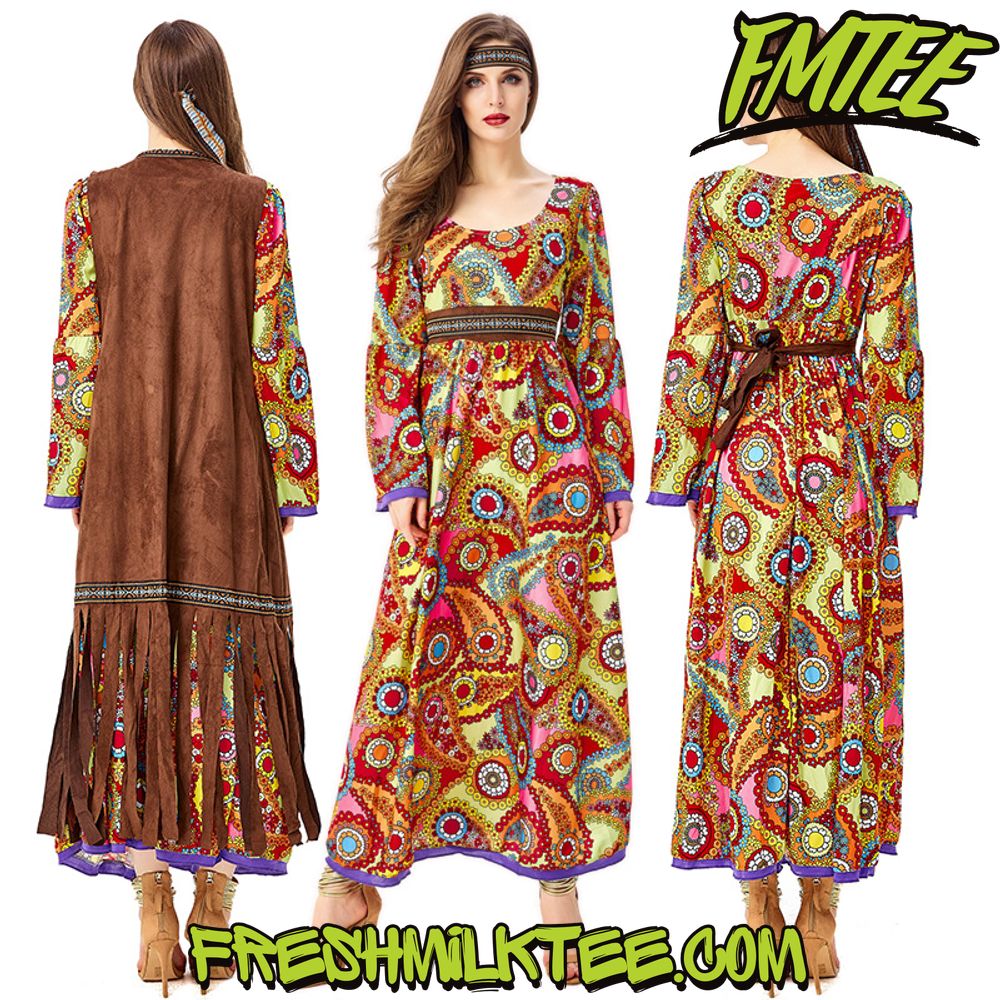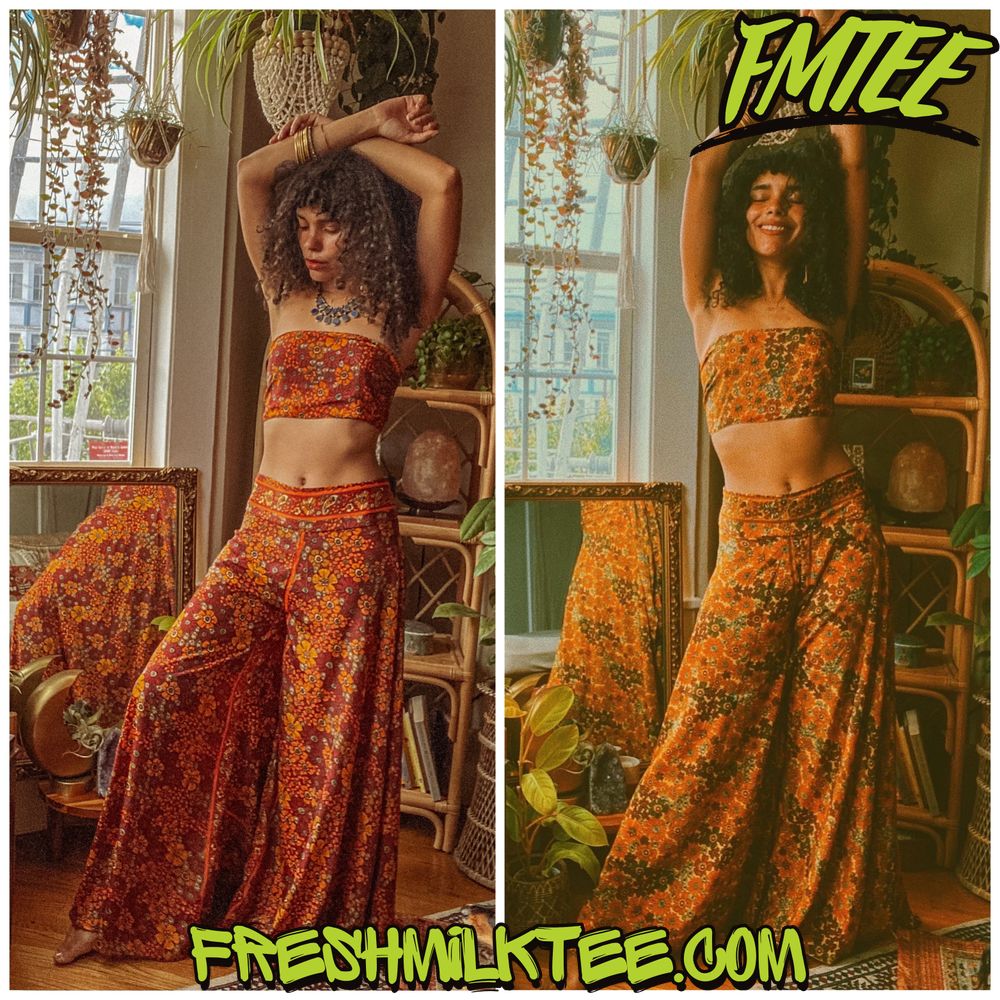Blog
How Does Hippie Clothing Help with the Weather?
How Does Hippie Clothing Help with the Weather?
Hippie clothing has long been synonymous with comfort, freedom, and a deep connection to nature. As fashion trends have evolved, hippie fashion has maintained its roots in natural fabrics, loose-fitting designs, and eco-conscious choices. But one of the lesser-known benefits of hippie clothing is how it helps individuals adapt to varying weather conditions. In this article, we will explore how hippie clothing serves as a solution to both extreme temperatures and shifting seasonal changes. Whether you’re dealing with warmer climes or braving the winter, hippie fashion has something for everyone.
Introduction: The Role of Hippie Clothing in Weather Adaptation
When you think of hippie clothing, what likely comes to mind are flowy dresses, loose-fitting clothes, and earthy tones. These clothes are not just a reflection of a lifestyle or aesthetic; they are designed with nature in mind. The hippie movement emphasized living in harmony with the environment, which is why many of the materials used in hippie clothing are natural and breathable. These fabrics allow for a much better adaptation to the weather compared to synthetic materials that can trap heat or moisture.
Over the years, hippie clothing has evolved from a subculture fashion statement to a mainstream trend. Yet, the principles of comfort and functionality have remained intact. Loose-fitting clothes made from natural fabrics are a staple in hippie fashion, and these clothes offer solutions to tackle varying climates effectively.

How Hippie Clothing Helps with Temperature Regulation
Hippie Clothing Benefits for Weather
Hippie clothing provides a unique approach to temperature regulation through its selection of natural fibers, loose fits, and layered designs. The key lies in the materials used for these garments—breathable fabrics like cotton, linen, and hemp. These fabrics are highly effective in regulating body temperature, keeping the wearer cool in the summer heat and warm in the winter chill.
Unlike modern, synthetic fabrics, which can cause sweating or heat buildup, hippie clothing allows your body to breathe. This makes it ideal for weather adaptation, whether you’re in the midst of a hot summer day or dealing with a chilly winter evening.
Temperature Control Through Hippie Fashion
Hippie fashion goes beyond aesthetic appeal—it offers functional benefits, particularly in how it helps control temperature. The design of hippie clothing often prioritizes comfort and flexibility, which aids in keeping you comfortable regardless of the outside weather conditions. Whether it’s hippie pants, a boho blouse, or a cozy sweater, the designs work together to regulate your body temperature, making them suitable for both warm and cold weather.

The Materials Behind Weather-Appropriate Hippie Outfits
Breathable Hippie Fabrics for Hot Weather
When the temperature rises, hippie clothing made from natural fibers is the perfect solution. Fabrics like cotton and linen are lightweight, moisture-wicking, and breathable, making them ideal for hot weather. These materials allow air to circulate, which keeps your body cooler and reduces the risk of overheating. Hippie fashion for hot weather often includes airy dresses, maxi skirts, and bohemian prints, all designed to offer comfort without sacrificing style.
Warm Hippie Clothes for Winter
When the seasons shift and winter arrives, hippie clothing doesn’t lose its practicality. In fact, the principles of hippie fashion make it perfect for layering, allowing you to stay warm while maintaining a boho aesthetic. Layering is a key component of hippie winter clothing, as it allows you to adjust to fluctuating temperatures throughout the day. Warm hippie clothes for winter often feature materials like wool, fleece, or thicker cotton blends, which trap heat and keep the wearer cozy even in colder climates.
Hippie Fashion for Different Weather Conditions
Hippie Clothing for Sun Protection
When it comes to protecting your skin from the sun, hippie clothing has a natural advantage. Loose-fitting garments made from lightweight, breathable materials like cotton or linen offer sun protection without sacrificing comfort. Many hippie fashion pieces feature wide-brimmed hats, bohemian accessories, and long-sleeve dresses that provide additional shielding against UV rays. Hippie clothing helps you stay protected under the hot sun while also aligning with the natural, eco-conscious principles of the hippie movement.
Hippie Garments for Rain
While hippie clothing is often associated with sunshine and summer, it also has a place in rainy weather. Hippie garments for rain typically include long ponchos, oversized jackets, and rain boots that are both functional and stylish. Many boho style designs incorporate water-resistant materials or fabrics that dry quickly, keeping the wearer comfortable in wet conditions. Moreover, the loose-fitting nature of hippie clothing ensures that you remain unrestricted, even during unexpected downpours.
Hippie Winter Clothing for Warmth
Winter doesn’t have to mean sacrificing style or comfort. Hippie fashion provides an array of cozy, warm clothing options. From hippie winter clothing like knitted sweaters and scarves to boho style coats, these items offer excellent warmth without the bulkiness of traditional winter attire. Layering is also key in hippie fashion, allowing you to build a wardrobe that can be adjusted to various levels of cold.

Eco-Friendly and Sustainable Hippie Clothing for Weather Protection
Sustainable Clothing for Weather Adaptability
Hippie fashion has always been at the forefront of sustainability. The hippie movement was rooted in a deep respect for the environment, and this respect is reflected in the materials used to make hippie clothing. Eco-friendly clothing for weather protection includes garments made from organic cotton, hemp, and other sustainable fibers. These materials help the wearer stay comfortable while also reducing their environmental footprint.
Natural Fibers in Hippie Fashion for Comfort in Any Climate
Natural fibers, such as wool, cotton, and linen, are ideal for both hot and cold weather because they allow the skin to breathe while offering warmth when needed. These fabrics are not only comfortable but also durable and eco-friendly. Natural fibers in hippie fashion help create clothing that adjusts to weather conditions, making them versatile choices for people seeking both comfort and sustainability in their wardrobe.
Hippie Style for Seasonal Transitions
Bohemian Clothes for Changing Climates
One of the best aspects of hippie clothing is its ability to adapt to changing climates. Whether you’re transitioning from a warm spring to a cool autumn or experiencing the shifting temperatures of early spring, bohemian clothes are perfect for layering. Boho style can be customized for any season, and by adding or removing layers, you can stay comfortable through any seasonal shift.
Hippie Wardrobe for Seasonal Transitions
A well-curated hippie wardrobe can carry you through any season with ease. Hippie clothing for seasonal transitions often includes versatile pieces like maxi dresses, hippie pants, and lightweight sweaters. With the right hippie accessories and a few key layers, these pieces can be adapted for colder months or warmer days, ensuring you’re always prepared for whatever weather comes your way.
How Hippie Clothing is Ideal for Outdoor Weather
Hippie Clothing for Outdoor Weather and Activities
When you’re spending time outdoors, you need clothing that can handle the elements. Hippie clothing for outdoor weather often features durable fabrics and practical designs that are comfortable for all kinds of outdoor activities. Whether you’re hiking, traveling, or simply enjoying a day at the beach, hippie clothes provide the perfect balance of style and practicality.
Cool Clothing for Hot Days with Hippie Style
For hot days, hippie clothing is perfect. Loose-fitting garments like hippie dresses, bohemian skirts, and hippie pants are ideal for keeping you cool and comfortable. Breathable fabrics like cotton and linen allow air to circulate, helping regulate your body temperature and providing a fresh, cool feeling even in the hottest weather.
Conclusion: The Connection Between Hippie Fashion and Weather Adaptation
In conclusion, hippie clothing is much more than a fashion statement—it’s a practical solution to weather challenges. From breathable hippie fabrics for hot weather to warm hippie winter clothing for cold climates, this style offers a versatile range of options for weather adaptation. Whether you’re dealing with extreme heat, cold, or rain, hippie fashion provides the comfort, durability, and eco-friendliness needed for any climate.

Frequently Asked Questions
1. How does hippie clothing help with hot weather?
Hippie clothing is made from breathable fabrics like cotton and linen, which allow air to circulate and keep the body cool in hot weather. Loose-fitting designs also prevent the fabric from clinging to the skin, offering further comfort in the heat.
2. Is hippie fashion suitable for winter?
Yes! Hippie fashion includes items like wool sweaters, hippie pants, and layered outfits, which help provide warmth in cold weather. Layering is key to hippie winter clothing, allowing you to adjust your outfit based on the temperature.
3. What fabrics are best for hippie clothing in different weather conditions?
Natural fabrics like cotton, linen, and wool are ideal for hippie clothing as they regulate temperature. Cotton and linen are breathable for warm weather, while wool is perfect for keeping warm during the winter.
4. Can hippie clothing be worn outdoors in all climates?
Absolutely! Hippie clothing for outdoor weather is made from durable, eco-friendly materials that provide comfort and protection, making them suitable for a wide range of activities and climates, from hot beaches to chilly mountain hikes.
5. What are the best hippie clothing pieces for seasonal transitions?
Hippie wardrobe essentials for seasonal transitions include maxi dresses, boho sweaters, hippie pants, and layering pieces like scarves and shawls. These pieces can be mixed and matched to stay comfortable as the weather changes.

